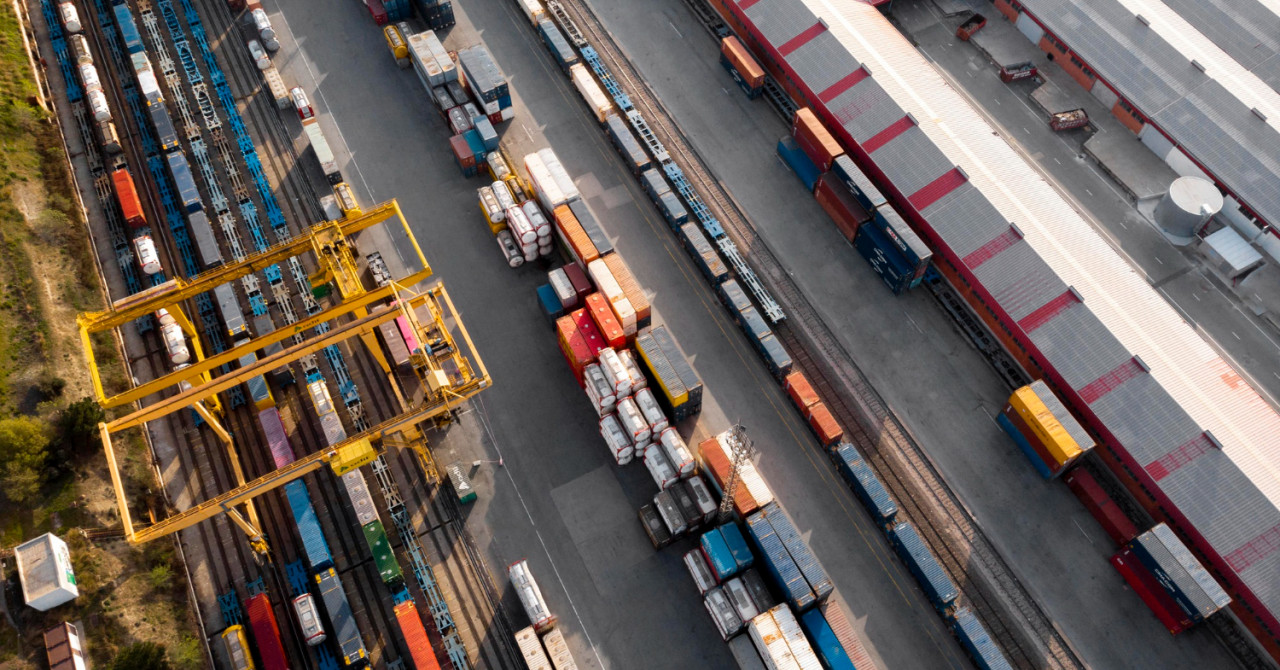News
LTL Freight Meaning and Its Impact on North American Logistics
Tuesday, September 19, 2023 at 16:03 pm
LTL, or Less-Than-Truckload, is more than just a shipping method—it represents a paradigm shift in how we perceive and manage freight transportation in the modern age. Before the advent of LTL, businesses often struggled to choose between sending partially filled trucks on their routes or waiting for a whole consignment, leading to potential delays. With LTL, the narrative shifted to one of collaboration and shared resources. Multiple businesses can now pool their shipments, regardless of size, to utilize the total capacity of a truck. LTL has emerged as a beacon of efficiency, especially in North America, where vast distances and sprawling urban centers demand efficient logistics.
Beyond the undeniable economic merits, LTL stands as a testament to the evolving ethos of the business world, where environmental consciousness is no longer a peripheral concern but central to strategy. Thanks to LTL's consolidation model, the reduced number of trucks on the road means fewer emissions and a significant stride toward a more sustainable future. As businesses in today's dynamic landscape continually seek a balance between efficiency, cost-effectiveness, and sustainability, LTL emerges as a holistic solution, breaking the traditional molds of freight transportation.
LTL Freight vs. FTL Freight
Diving deeper into the freight shipping universe, the distinction between LTL and FTL becomes a study of adaptability versus specialization. FTL, or Full Truckload, shipping is straightforward in its proposition. When a company has a massive shipment that can occupy the entire space of a truck, FTL becomes the logical choice. It offers exclusivity, ensuring that the truck carries goods from only one consignor, which can be vital for large, sensitive, or time-critical shipments. However, FTL's rigidity might only resonate with some business models. Enter LTL, a solution born out of the need for flexibility and efficiency.
Designed to address the middle ground of shipping needs, LTL considers the myriad of businesses that produce goods in unpredictable volumes or are not large enough to fill a truck regularly. What sets LTL apart is its inherent adaptability. It acknowledges modern businesses' diverse and ever-evolving needs, ensuring they are not pigeonholed into rigid logistical frameworks. By acting as a bridge between the extremes of parcel shipping and total truckload deliveries, LTL provides businesses, regardless of size or production capabilities, access to a shipping solution that aligns with their operational rhythms, maximizing efficiency and economic viability.
How LTL Freight has Revolutionized North American Logistics
Streamlined Supply Chain
LTL freight's transformative impact on the logistics world is a testament to the dynamic adaptability of the North American supply chains. Before the era of LTL took center stage, the logistics landscape was trapped in an inefficient loop. Imagine massive trucks traversing vast distances, their enormous potential wasted as they transported cargo well below their capacity. Such inefficiencies didn't just dent profitability but also had environmental implications due to excessive fuel consumption and increased carbon footprints.
However, the rise of LTL heralded a logistical renaissance. LTL offered an eco-friendly and efficient solution by consolidating shipments and ensuring trucks are utilized optimally. No longer were trucks simply containers on wheels. Instead, they transformed into strategic assets, maximizing space utilization through advanced technology and algorithms determining the best way to load cargo, ensuring that every inch of space was effectively used.
But the LTL revolution doesn't stop at the truck's rear doors. The impact reverberates throughout the supply chain ecosystem. One of the often-underestimated benefits of LTL is its ability to introduce predictability into what was once a volatile supply chain. This newfound reliability allows businesses to master the art of inventory management. In a world where holding onto excessive inventory can quickly become an expensive liability, LTL's predictability helps firms minimize storage costs and, importantly, reduce the risk of stockouts – a critical factor in maintaining customer trust and satisfaction.
Moreover, LTL has catalyzed improved collaboration across the supply chain spectrum. Suppliers, manufacturers, and retailers now find themselves in a dance of synchronized operations, adjusting and adapting in real-time to changes, ensuring that the supply chain operates like a well-oiled machine. In the face of unprecedented global challenges, from ever-shifting consumer demands to unpredictable supply chain interruptions, LTL's integrated and optimized processes shine bright, offering a template for scalability and resilience.
Cost-Effective for Businesses
At the core of every business strategy lies the mandate for financial efficiency. In an ever-competitive global marketplace, where every penny saved can be the difference between growth and stagnation, companies are laser-focused on identifying areas of potential savings. One of the most prominent cost centers for many businesses, especially those deeply embedded in the manufacturing and retail sectors, has been transportation. The traditional logistical practices, where entire trucks were chartered even if the requirement was for a fraction of their capacity, represented a glaring fiscal inefficiency.
Enter LTL, the harbinger of a new, economically prudent era in logistics. It offered a nuanced, flexible pricing model that stood in stark contrast to the monolithic pricing structures of the past. Under LTL, businesses no longer paid for space they didn't use. Instead, they were introduced to a model where costs were directly proportional to usage, a boon, especially for Small and Medium Enterprises (SMEs), startups, and businesses whose demand patterns were more seasonal than steady.
The repercussions of this shift extend far beyond mere cost savings. Businesses can free up otherwise tied-up capital by leveraging LTL's economic efficiencies. This liberated capital allows businesses to redirect funds toward areas of strategic importance, research, and development, marketing campaigns, or market expansion strategies. With the rapidly evolving dynamics of the business world, where the ability to pivot and adapt is often the key to long-term success, the financial cushion offered by LTL becomes an invaluable asset, positioning companies for survival and sustained growth.
Eco-Friendly Transportation
The push towards sustainable and eco-friendly business practices is becoming more pronounced as the global community recognizes the urgency of addressing climate change and environmental degradation. As industries race to align with sustainable practices, transportation, a significant contributor to carbon emissions, has been a focal point of reform. Companies are no longer motivated by profitability; they are driven by purpose and responsibility. LTL freight, or Less-Than-Truckload freight, champions this transformation. Its inherent design principle of consolidating multiple shipments into a single truck journey makes business and ecological sense. By reducing the number of trucks on the road, we observe tangible reductions in fuel consumption, less congestion leading to fewer idling vehicles, and, consequently, a marked decrease in greenhouse gas emissions. Besides slashing operational expenses, this approach lets companies demonstrate a commitment to environmental preservation. As eco-awareness rises among consumers, aligning with sustainable practices like LTL isn't just ethically right—it's a powerful business differentiator. Companies can leverage their commitment to green logistics, bolstering their reputation and cultivating trust with contemporary consumers who value corporate sustainability.
Implementing LTL in Your Business: Key Steps
Assess your shipping needs: The complexity of modern business operations has made it imperative for companies to employ a multifaceted approach when evaluating their logistical needs. In LTL shipping, businesses must consider the sheer volume of their shipments and the intricate details that can impact shipping dynamics. Factors like shipment destinations, potential growth markets, the fragility of products, potential bottlenecks, and international regulations can all play pivotal roles in the decision-making process. The logistical puzzle becomes even more multifaceted when companies deal with international markets with varying customs regulations and market dynamics. As global commerce expands, understanding these varying parameters becomes crucial.
Moreover, historical shipping data can provide invaluable insights. Analyzing trends over the past years can offer predictive insights, allowing companies to forecast potential challenges and adjust their LTL strategies accordingly. This depth of evaluation ensures that businesses aren't merely reacting to immediate needs but are proactively strategizing for the future, mitigating risks, and capitalizing on opportunities in the ever-evolving world of logistics.
Find a reliable LTL carrier: In our digital age, where every decision is magnified and echoed across the internet, selecting the right LTL carrier transcends the basic parameters of cost and efficiency. Every interaction, partnership, and transaction amplifies a company's digital footprint. An LTL carrier's performance directly impacts this online perception. Hence, conducting exhaustive research, reading reviews, seeking referrals, and engaging in pilot shipments are all prudent measures.
Businesses should be discerning, understanding that a carrier's operational efficiency is just the tip of the iceberg. The deeper layers, which include a commitment to customer service, dedication to on-time deliveries, responsiveness to unforeseen challenges, and the flexibility to cater to customized needs, all culminate to form the crux of a truly reliable carrier. There's an immense value in seeking out carriers that showcase competency and values like integrity, transparency, and eco-consciousness. The interplay between a brand and its partners is now under constant scrutiny. In this world of instant feedback, a logistical blunder can reverberate across social media, forums, and review platforms, potentially denting the reputation painstakingly built over the years.
Moreover, long-term engagement metrics of a carrier, like client retention rates, can shed light on their ability to foster healthy, sustainable business relationships. How a carrier faced and overcame obstacles, whether they be volatile fuel prices, labor unrest, technological disruptions, or global crises, provides a mirror to their resilience and adaptability. A carrier's transparency in their communication methodologies, especially during such challenging times, speaks volumes. Companies should prioritize carriers with clear, easy-to-understand, and quick escalation processes, ensuring that any potential issue is addressed promptly. Furthermore, contingency planning by a carrier, which might include backup transportation methods, alternative routes, and a diversified fleet, indicates a well-thought-out risk mitigation strategy.In today's complex business environment, the LTL carrier becomes an extension of the brand it serves. As such, businesses must invest time and effort in this selection process, understanding that the carrier they choose will transport their goods and advance their reputation.
Integrate LTL into your logistics strategy: The amalgamation of LTL into a firm's overall logistics approach isn't a mere addition; it's akin to introducing a new subsystem into a thriving ecosystem. This integration goes beyond surface-level tweaks. The organization must evolve its mindset, approach, and methodology from the boardroom to the warehouse floor.
Leadership's role is paramount in steering this change. The executives and decision-makers must illuminate the benefits, outline the roadmap, and establish the success metrics for LTL integration. But this isn't a directive process; it's collaborative. Each department, be it sales forecasting potential shipments, HR training staff, or IT developing the necessary digital interfaces, plays a role in this transformation. Proactive engagement methods, like workshops detailing the intricacies of LTL, brainstorming sessions to address potential challenges, and external consultants offering industry best practices, ensure the company is not just implementing but mastering LTL.
The importance of open communication channels in this transition phase cannot be stressed enough. Employees often harbor questions, doubts, or even reservations when faced with such paradigm shifts. Regular town hall meetings, feedback sessions, and open-door policies can act as valves, releasing building pressure and ensuring a smooth transition flow. On the operational front, insights from staff managing shipments, interacting with carriers, and overseeing warehousing can be a goldmine. Their day-to-day experiences can help refine strategies, iron out inefficiencies, and identify potential opportunities.
The technological revolution underway in the logistics sector further adds dynamism to the LTL integration process. Leveraging machine learning can result in dynamic route optimization, ensuring faster and more efficient deliveries. With its promise of transparent and immutable records, blockchain can offer unparalleled visibility into the shipping process. Integrating these technologies is not just about staying updated; it's about pioneering a future where LTL isn't an addition to the logistics strategy but the heart of it.
The Future of LTL in North America: The profound influence of LTL in North America's logistics story mirrors the broader global shift towards sustainable and efficient trucking business practices. The eco-conscious consumer of today demands transparency and responsibility from businesses. As a result, North American enterprises recognize the dual benefits of LTL – operational efficiency and an eco-friendly footprint. This consumer-driven shift is further supported by governmental policies that incentivize sustainable practices. Companies are no longer evaluated solely on their profit margins but on their societal and environmental impact.
This broadening of evaluation metrics means businesses must adopt practices that resonate with these values. In this landscape, LTL emerges as more than just a logistical solution. It becomes a symbol of a company's commitment to sustainability and efficiency. As digital transformation continues to blur geographical boundaries and the global marketplace becomes more accessible, the principles of LTL – efficiency, sustainability, and adaptability – will become the foundational pillars for businesses not just in North America but globally.
You might also want to read
recommended posts



 English
English

Comments
Post a Comment
Your e-mail address will not be published. Required fields are marked *
Cancel Reply